1.
Lilac Pinkgill (
Entoloma porphyrophaeum).
-
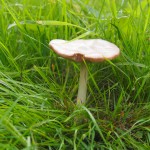
- 1. Lilac Pinkgill
-
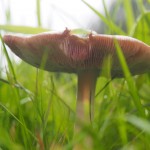
- 1. Lilac Pinkgill
-
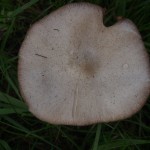
- 1. Lilac Pinkgill
-
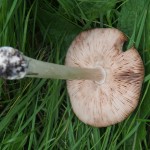
- 1. Lilac Pinkgill
-
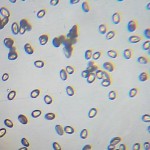
- 1. Lilac Pinkgill
Growing in longish grass. Two. Cap 7-8cm, stem 9-10cm. Earthy smell. Lilac Pinkgill is a common mushroom but it's not one I've really noticed before, so my confidence in the id is a bit shaky. ID is guess. Sporeprint pinkish brown. Spores 10.5-13µ x 7-8.5µ.
2.
Fleecy Fibrecap (
Inocybe flocculosa).
-
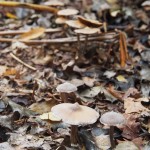
- 2. Fleecy Fibrecap
-
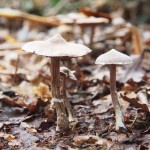
- 2. Fleecy Fibrecap
-
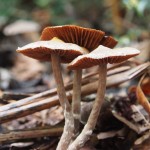
- 2. Fleecy Fibrecap
-
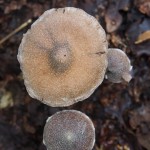
- 2. Fleecy Fibrecap
-
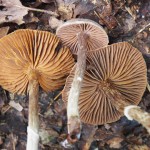
- 2. Fleecy Fibrecap
-
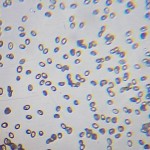
- 2. Fleecy Fibrecap
Growing in leaf litter near oak and holly trees. Troop of more than a dozen. Cap up to 6cm. No smell. This id is rather doubtful, but it's certainly a fibrecap and I can't find another species that's more likely. One of my books says it's probably a complex of species, implying some variability. ID is wild guess. Sporeprint brown. Spores 6.5-8µ x 4.5-6µ.
3.
Tawny Grisette (
Amanita fulva).
-
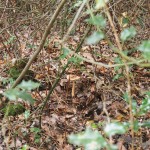
- 3. Tawny Grisette
-
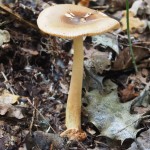
- 3. Tawny Grisette
-
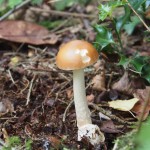
- 3. Tawny Grisette
-
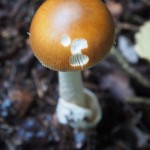
- 3. Tawny Grisette
-
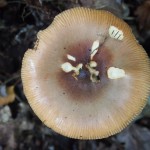
- 3. Tawny Grisette
-
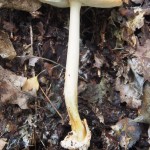
- 3. Tawny Grisette
-
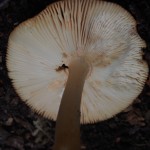
- 3. Tawny Grisette
-
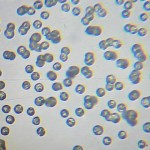
- 3. Tawny Grisette
Growing in leaf litter near oak and holly trees. Several solitary mushrooms dotted around the wood. Cap 8cm, stem 12cm. No smell. Notably distant gills. My books say this is edible but I'm not sure that I will ever bring myself to eat any Amanita! Sporeprint white. Spores 9.5-12µ x 8.5-11µ.
4.
Common Stump Brittlestem (
Psathyrella piluliformis).
-
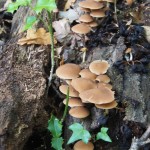
- 4. Common Stump Brittlestem
-
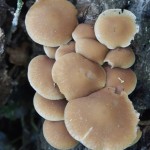
- 4. Common Stump Brittlestem
-
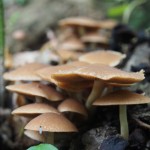
- 4. Common Stump Brittlestem
-
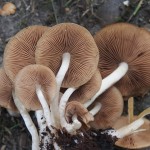
- 4. Common Stump Brittlestem
-
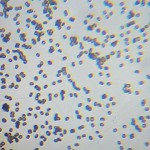
- 4. Common Stump Brittlestem
Growing on oak log. Several clusters on the log. Cap up to 5cm. Smell mushroomy. Brittle stems. Some of my mushrooms were quite large for this species. ID is almost sure. Sporeprint dark umber brown. Spores 4.5-6µ x 3-4.5µ.
5.
Laccaria striatula.
-
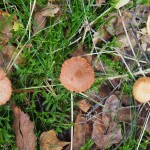
- 5. Laccaria striatula
-
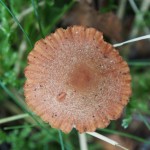
- 5. Laccaria striatula
-
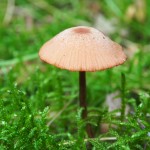
- 5. Laccaria striatula
-
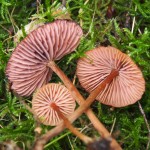
- 5. Laccaria striatula
-
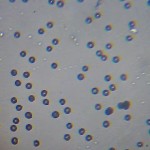
- 5. Laccaria striatula
Growing in moss beside birch tree. Several scattered. Cap 2-4cm, stem 4-8cm. No smell. Thin tough stem. Philips says this mushroom is rare and I can't even find it in Buczacki. It's a very attractive little thing and didn't initially look like a Laccaria (Deceiver) at all. ID is almost sure. Sporeprint white, but not enough to be sure. Spores 6.5-9µ x 6-8µ.
6.
Coconut Milkcap (
Lactarius glyciosmus).
-
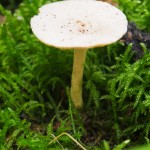
- 6. Coconut Milkcap
-
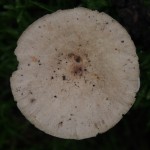
- 6. Coconut Milkcap
-
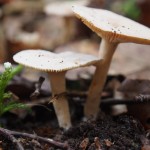
- 6. Coconut Milkcap
-
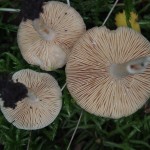
- 6. Coconut Milkcap
-
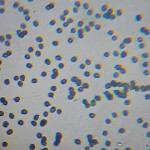
- 6. Coconut Milkcap
Growing in moss and leaf litter near oak trees. Several scattered around. Cap 2.5-4.5cm. Strong coconut smell. Milk not very profuse. ID is almost sure. Sporeprint white. Spores 6-8µ x 5-6.5µ.
7.
Snowy Waxcap (
Hygrocybe virginea).
-
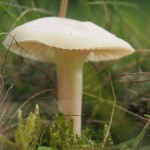
- 7. Snowy Waxcap
-
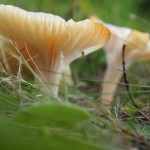
- 7. Snowy Waxcap
-
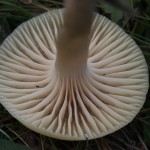
- 7. Snowy Waxcap
-
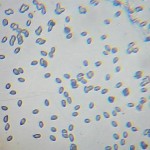
- 7. Snowy Waxcap
Growing in grass/moss. Lots trooping. Cap 1.5-5cm. No smell. The books say the cap is only up to 4cm across and I found one with 5cm, but it's still most likely to be Snowy Waxcap which is very common. ID is fairly likely. Sporeprint white. Spores 7-9.5µ x 4.5-6µ.
8. Unidentified.
-
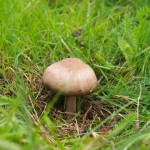
- 8. Unidentified
-
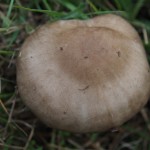
- 8. Unidentified
-
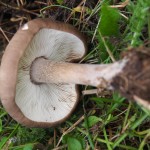
- 8. Unidentified
-
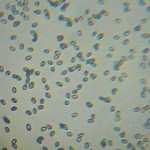
- 8. Unidentified
Growing in grass/moss. One. Cap 5cm. No smell. Could be an immature specimen? Looks like a Knight (Tricholoma) but these all grow in woods, so not sure. Difficult with only one specimen. Sporeprint white. Spores 5.5-8µ x 4-5.5µ.
9.
Hygrocybe helobia.
-

- 9. Hygrocybe helobia
-
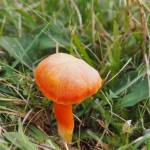
- 9. Hygrocybe helobia
-
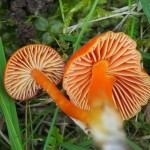
- 9. Hygrocybe helobia
-
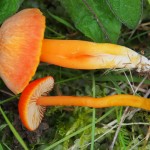
- 9. Hygrocybe helobia
-
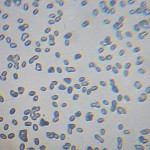
- 9. Hygrocybe helobia
Growing in grass/moss. A few scattered around. Cap 1.2-2.5cm. Slight indistinct smell. These can apparently have a garlic smell but I didn't smell these very carefully as I was expecting the usual lack of smell with a waxcap. ID is best guess. Sporeprint white. Spores 6-9µ x 4.5-7µ.
10. Unidentified.
-
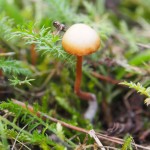
- 10. Unidentified
-
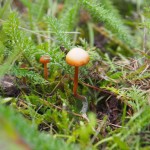
- 10. Unidentified
-
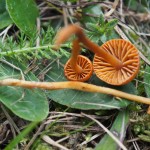
- 10. Unidentified
-
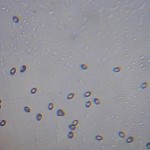
- 10. Unidentified
Growing in grass/moss. A few widely dispersed. Cap 0.4-1cm. No smell, but not big enough to smell properly. Very hard to identify small brown unremarkable mushrooms. Spores 8-9.5µ x 5-6.5µ.
11.
The Blusher (
Amanita rubescens).
-
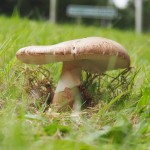
- 11. The Blusher
-
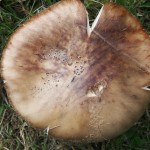
- 11. The Blusher
-
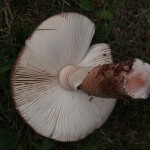
- 11. The Blusher
-
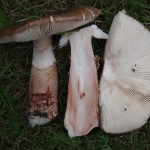
- 11. The Blusher
-
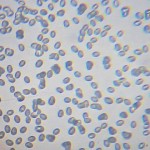
- 11. The Blusher
Growing in grass/moss. One. Cap 11cm. No smell. Stem tapers upwards. Id is quite uncertain. Habitat is wrong but this must be an Amanita and none of them specialise in grass habitats. It was really quite near trees. ID is fairly likely. Sporeprint white. Spores 7.5-10µ x 5.5-7.5µ.
12.
Conifer Tuft (
Hypholoma capnoides).
-
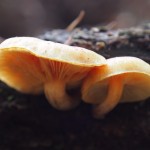
- 12. Conifer Tuft
-
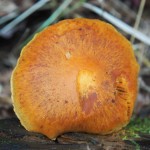
- 12. Conifer Tuft
-
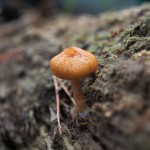
- 12. Conifer Tuft
-
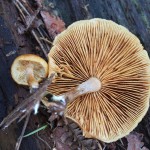
- 12. Conifer Tuft
-
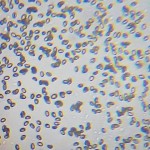
- 12. Conifer Tuft
Growing on rotting log. Hard to identify tree species but conifers were around. A few dotted in small clusters. Cap up to 6cm. No smell. Didn't taste it, but wish I had as Conifer Tuft tastes sweet, unlike other tufts. This has the definite look of a Hypholoma Tuft with greyish pastel coloured gills. In theory could be a Sulphur Tuft or Brick Tuft but doesn't have the right cap colour for either of those. ID is best guess. Sporeprint brown. Spores 6-7.5µ x 4-5µ.
13.
Beech Milkcap (
Lactarius blennius).
-
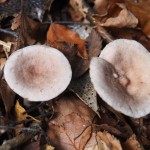
- 13. Beech Milkcap
-
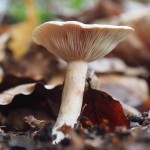
- 13. Beech Milkcap
-
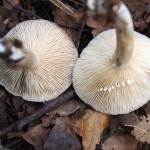
- 13. Beech Milkcap
-
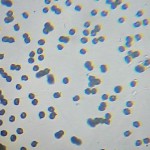
- 13. Beech Milkcap
Growing in leaf litter near oak and holly trees. Several dotted around. Cap 3-5cm. No smell. Milk very hot. Not growing anywhere near beech trees but apparently the Beech Milkcap isn't all that fussy. ID is very likely. Sporeprint white. Spores 7-8.5µ x 5.5-7µ.

































































